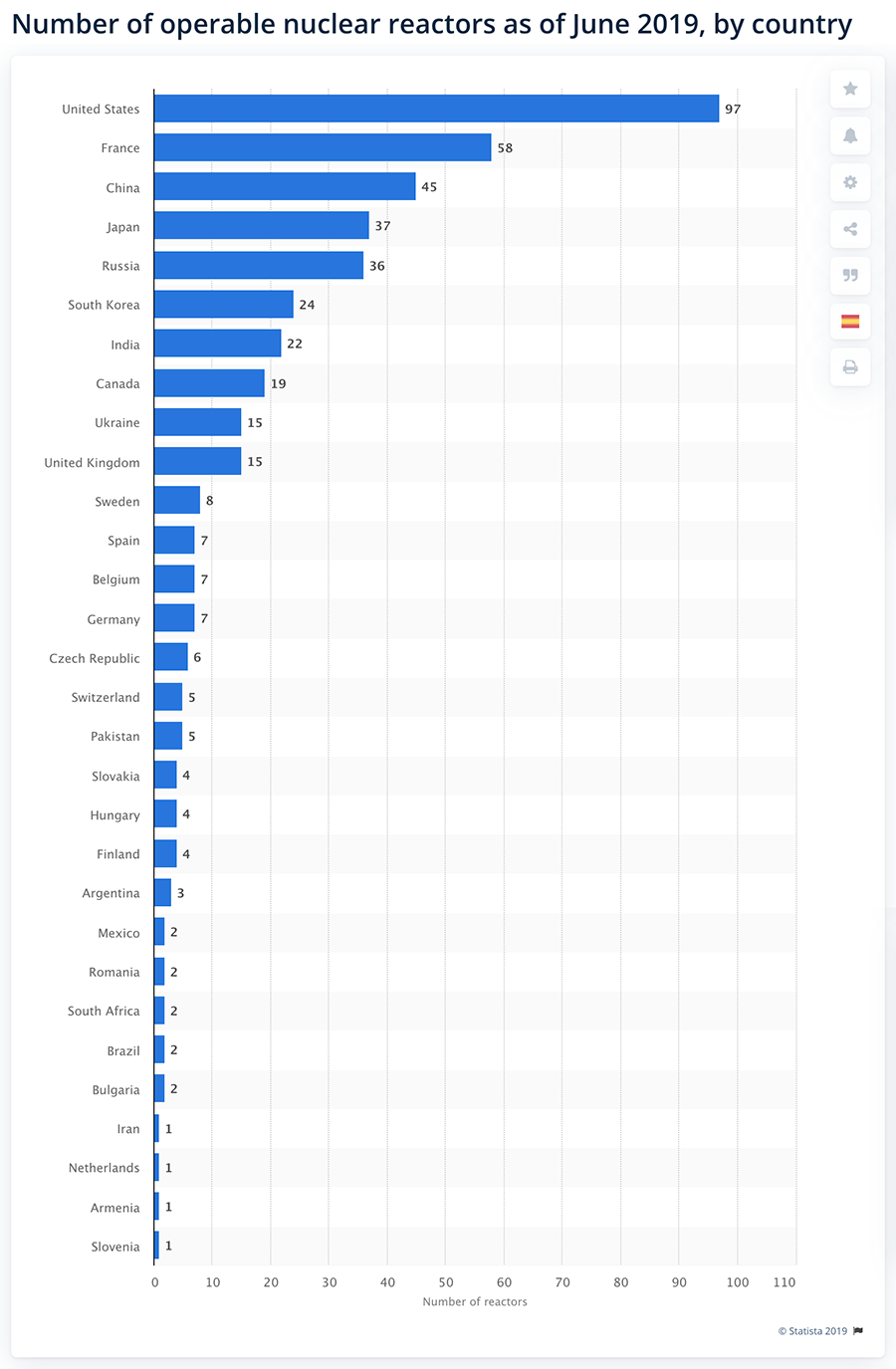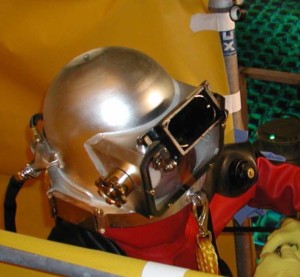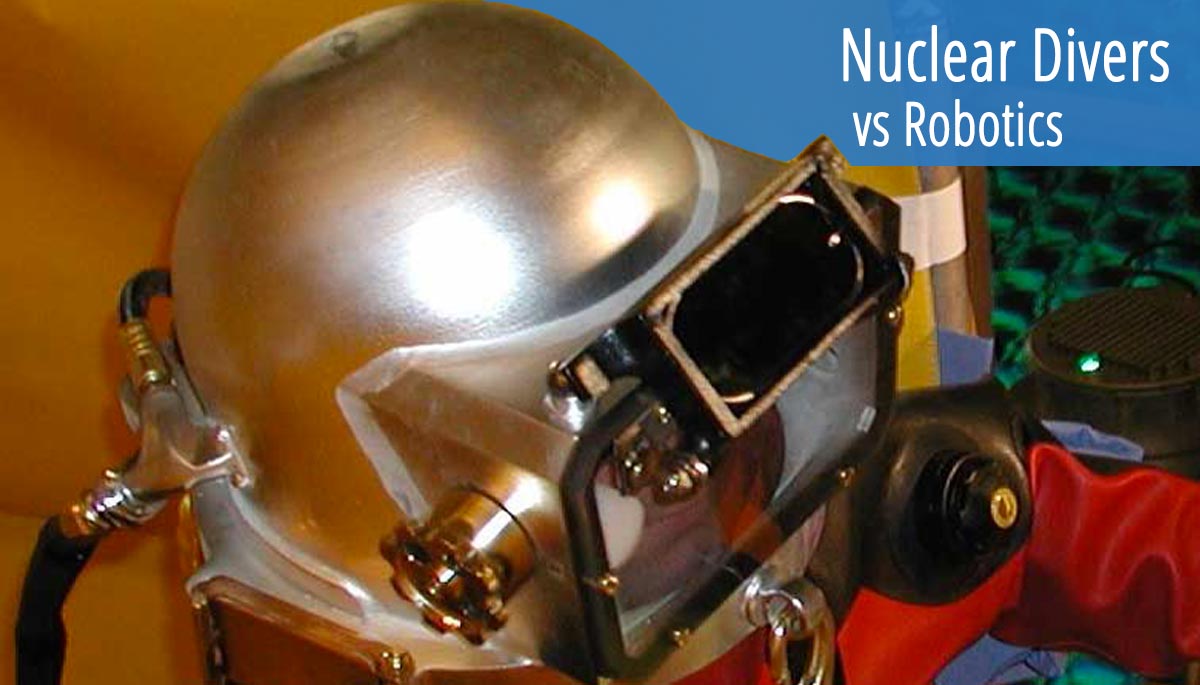Electrical power produced from nuclear reactors is a common method of power generation in modern society and is widely used throughout the world.
The technology behind nuclear power splits atoms from specific elements and generates power by the energy released. The science of radiation technology dates to 1895 but most advances were made between 1939-1945. In these years the technology was developed during World War II for use in bombs. A decade later the research was repurposed for the practical use of nuclear fission. This gave rise to nuclear power generation.
Nuclear facility stakeholders should be asking the question “Do we have the time and money to deploy robotics?”.
Nuclear Decommissioning & Remediation Challenges
In recent years there’s been new challenges in the world of power generation that’s produced a new trend. Nuclear power is being phased out around the world with more nuclear reactors being decommissioned than being opened.
For years to come, nuclear facility decommissioning will be a monumental task that requires sizeable effort and skill. To date, there are approximately 450 nuclear power plants online worldwide. Of these several hundred plants, over 50% of these reactor facilities are nearing or are at the end of their operational lifetime. This means critical decisions will be made as to their future.
Additionally, there will be environmental concerns for each site involved in nuclear research, milling/uranium milling and refining of raw radioactive materials. Within these hazardous site environments, remediation will be necessary and should be performed by reliable underwater nuclear decommissioning companies.

Types of Nuclear Facility Tasks
As one of the world’s leading underwater nuclear decommissioning companies, we’ve compared robotic operation to underwater divers for several on-site facility tasks such as Intermediate Level Waste (ILW) segmentation and packaging metal components, sludge removal, and working in spent fuel pools.
Planning for your Underwater Nuclear Project
When scoping your in-water nuclear project time, costs and schedule of tasks, it’s essential you evaluate the available underwater techniques most appropriate for your project. Below we’ve outlined several in-water approaches that can be considered for your nuclear project.
Underwater Robotics
Underwater robotics (AKA underwater robots) is a technology originally used for oceanographic research, inspection, and performing limited and task-specific operations while being controlled by a top-side operator. The two most common types of underwater robotics are Remotely Operated Vehicles (ROV) and Unmanned Autonomous Vehicle (UAV).
- Commercial applications: Explorations and Bespoke Task Operations
- Benefits: Used in High and Very High Radiation Environment
- Drawbacks: Typically, Bespoke tooling, with no path for economical, quick field adjustment to changing conditions or unknowns, unpredictable outcomes and technical malfunction from the radioactive environment.
- Average Cost Rating: High
- Economics: High initial cost with embedded Research and Development expense, short life span and high cost of disposal
Remotely Operated Vehicles (ROV)
ROV’s are unmanned underwater robots that are remotely controlled by top-side pilot. Typically, they’re used for exploration and inspection tasks. They may also include lights, video camera, onboard sonar and sometimes an articulating arm.
- Commercial applications: Inspection and Bespoke Task Operations
- Benefits: Used in High and Very High Radiation Environment
- Drawbacks: Technical malfunction, inoperable in poor visibility – commonplace in sludge areas or algae blooms. Tasks are limited, typically no quick modification for an unforeseen or mis-estimated job, which translates to additional expense, more ROV’s and delays.
- Average Cost Rating: High
- Economics: High initial cost with embedded Research and Development expense, short life span and high cost of disposal. One ROV never seems to be enough to complete the project.
Unmanned Autonomous Vehicle (UAV)
A machine that can maneuver in an in-water environment autonomously without human interaction.
- Commercial applications: Exploration
- Benefits:
- Drawbacks: Unpredictable outcomes, technical malfunction from radioactive environment
- Average cost rating: High
What’s the Difference Between an AUV and ROV?
An AUV works independently without connecting cables, where ROV’s are physically connected via cabling to a remote operator (pilot).
What are Nuclear Divers?
 Since water is essential for nuclear facilities, acting as a barrier for radiation and to provide cooling, there’s a high demand for underwater work. Disposition of the work nearby, while using the existing radiation shielding capability of the water itself, leads to extensive advantages over limited task ROV’s or moreover, work in the dry.
Since water is essential for nuclear facilities, acting as a barrier for radiation and to provide cooling, there’s a high demand for underwater work. Disposition of the work nearby, while using the existing radiation shielding capability of the water itself, leads to extensive advantages over limited task ROV’s or moreover, work in the dry.
Nuclear divers, like those employed by leading underwater nuclear decommissioning companies like UCC, are expert commercial divers that support nuclear power operations. Typically, they work on-site throughout the year performing inspections, preventative maintenance, ongoing general maintenance and emergent problems, but can also be utilized in decommissioning within the spent fuel pools for many efficient and economical tasks.
- Commercial Applications: “In situ” (in-place) Large and Small Component Volume Reduction and Packaging, Desludge and debris removal, Equipment Dismantlement and Packaging
- Drawbacks: Coordination with other Projects, Dedicated Support Team such as Radiation Protection
- Benefits: Safe, low cost, significantly reduced program radiation dose exposure, significant schedule advancement, regulator endorsed or approved, repeatable, predictable solutions
- Average Cost Rating: High
- Economics: Significant Program Cost Savings, primarily derived from overall schedule enhancements
Nuclear Customers – Success & Outcomes
Spent Fuel Pool Furniture Removal, Liner Removal & Concrete Fixative Application
| Nuclear Divers | Topside & Robotics |
|---|---|
| .9 Rem, Actual and 984 Labor Hours | 8.7 Rem Estimated and 9300 Labor Hours |
Spent Fuel Pool Equipment & Piping Removal & Packaging
| Nuclear Divers | Topside & Robotics |
|---|---|
| Estimated 90% Exposure Reduction | 20 Rem |
Boiling Water Reactor Suppression Chamber Cleaning & Inspection
| Nuclear Divers | ROV |
|---|---|
| De-sludge and Inspection: 9 Days Radiation Exposure: 32mSv |
De-sludge and Inspection: 43 Days Radiation Exposure 73mSv |
Large Component, BWR Steam Dryer Volume Reduction & Packaging
| Nuclear Divers | Remote Tooling |
|---|---|
| Exposure 8 Rem | Actual Exposure: 16 Rem |
Spent Fuel Pond Decommissioning Support for Draining
|
Leverage the Services of a Leader Among Underwater Nuclear Decommissioning Companies
Philip McDermott, UCC’s Vice President of Nuclear Services, states, “as UCC progresses through our fifth decade, we are proud to offer these unique decommissioning services where we fill a niche role in delivering extensive cost and radiation exposure savings to customers who require underwater solutions whereas perhaps ROV’s have run their course”.
UCC is a leading commercial diving company dedicated to advancing technology for the nuclear power industry. With unparalleled expertise in nuclear diving, underwater construction, and cutting-edge technology, we provide a comprehensive suite of nuclear services that support safe and efficient operations worldwide.
If you are looking for services offered by trusted underwater nuclear decommissioning companies, look no further than UCC. Reach out today and discover how we are helping customers achieve their goals and extending the operational life of their nuclear facilities.

